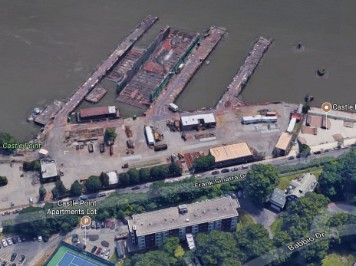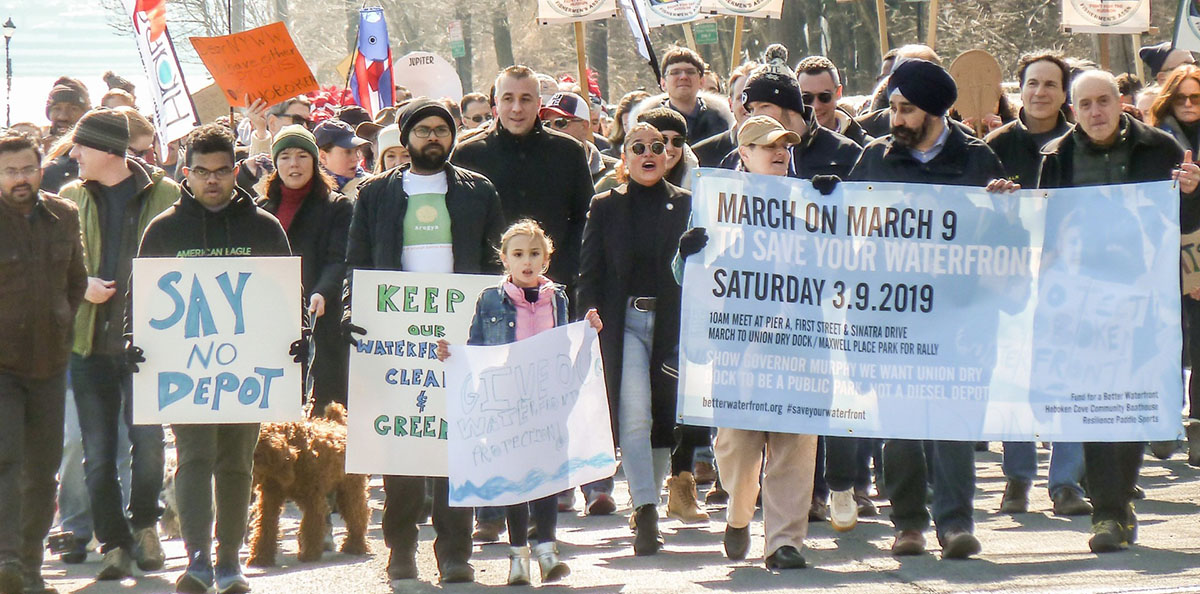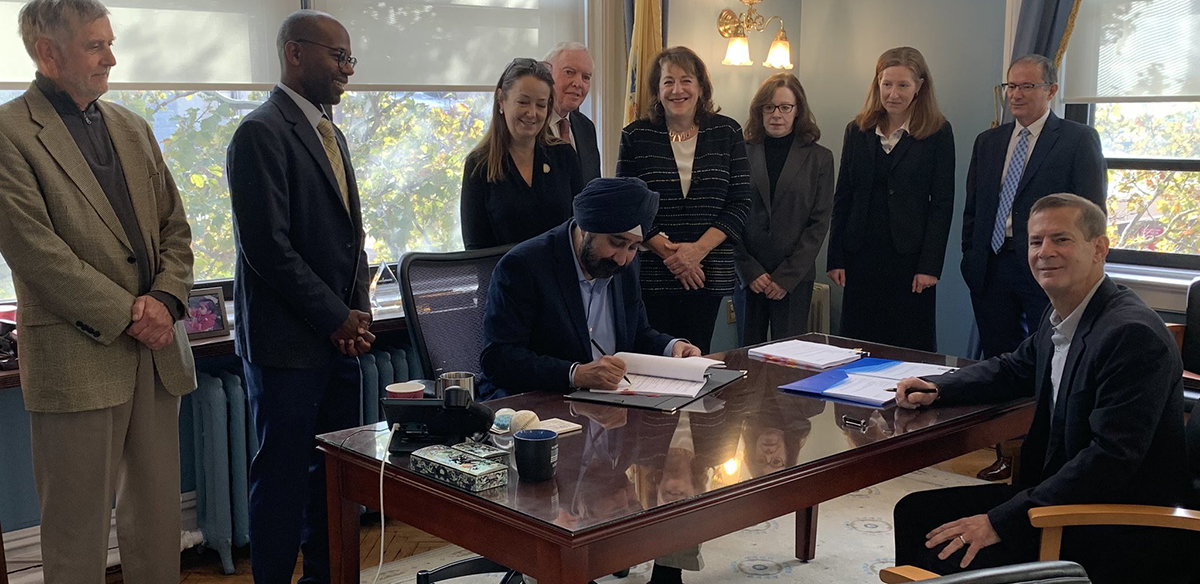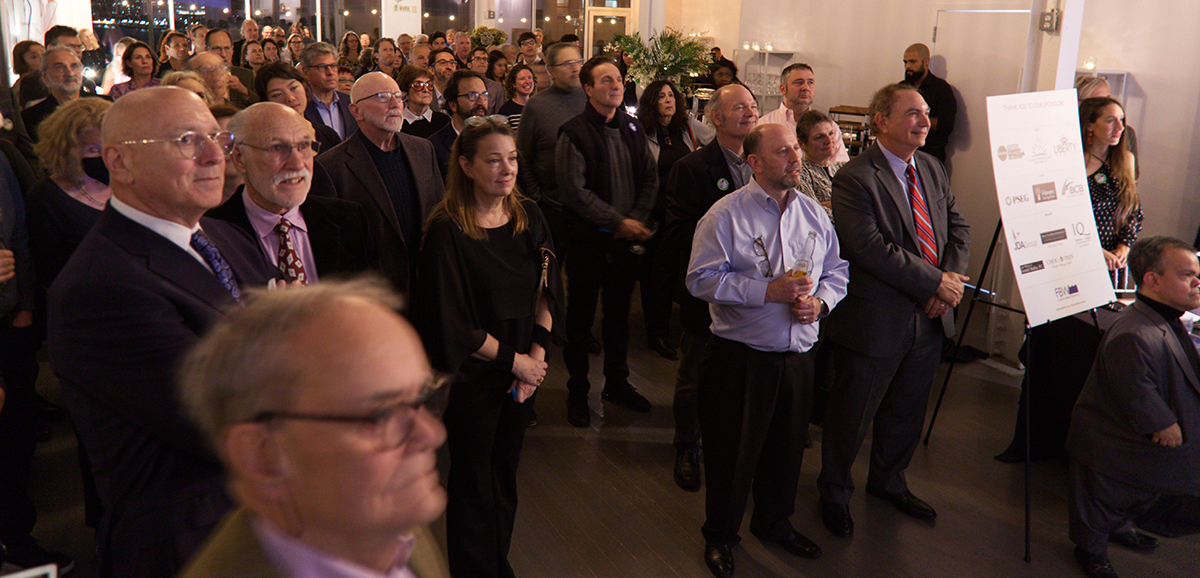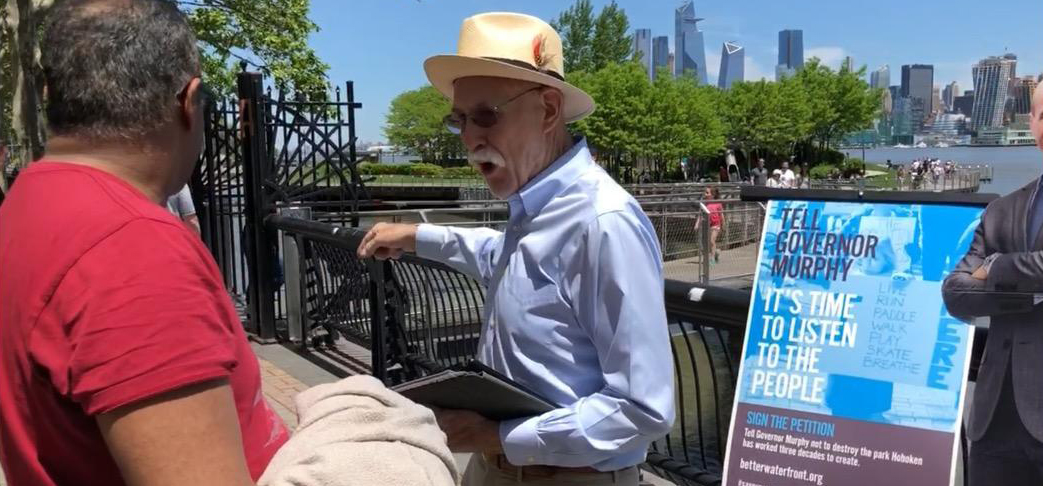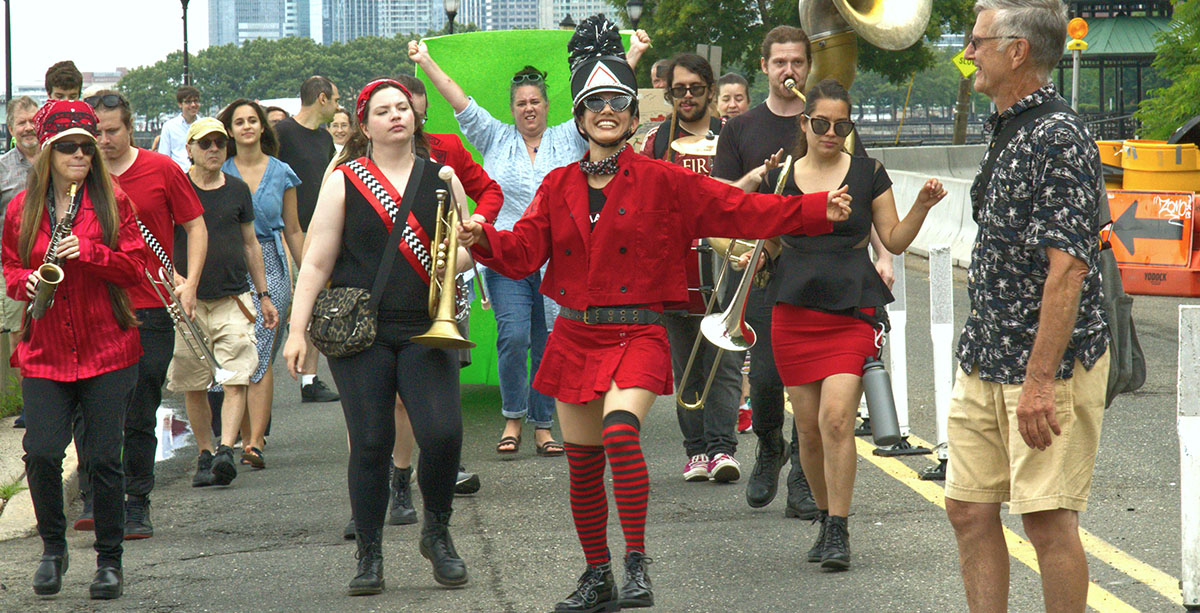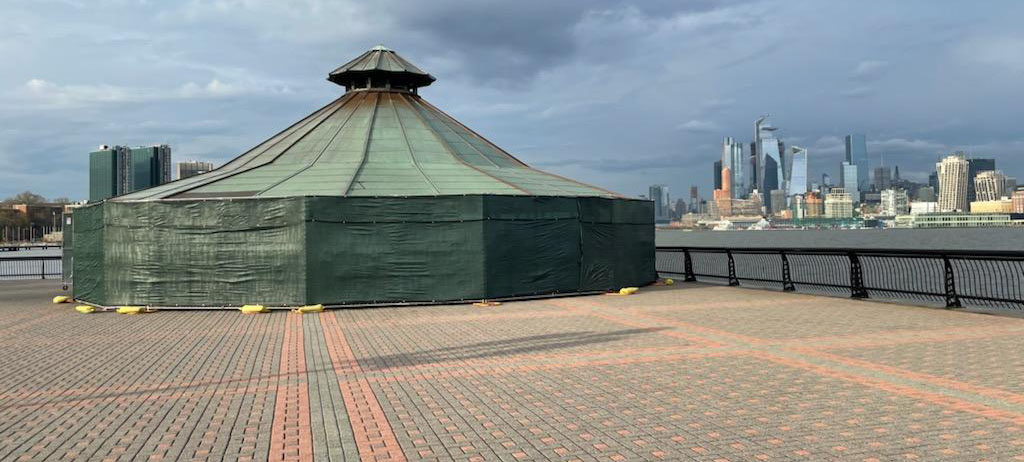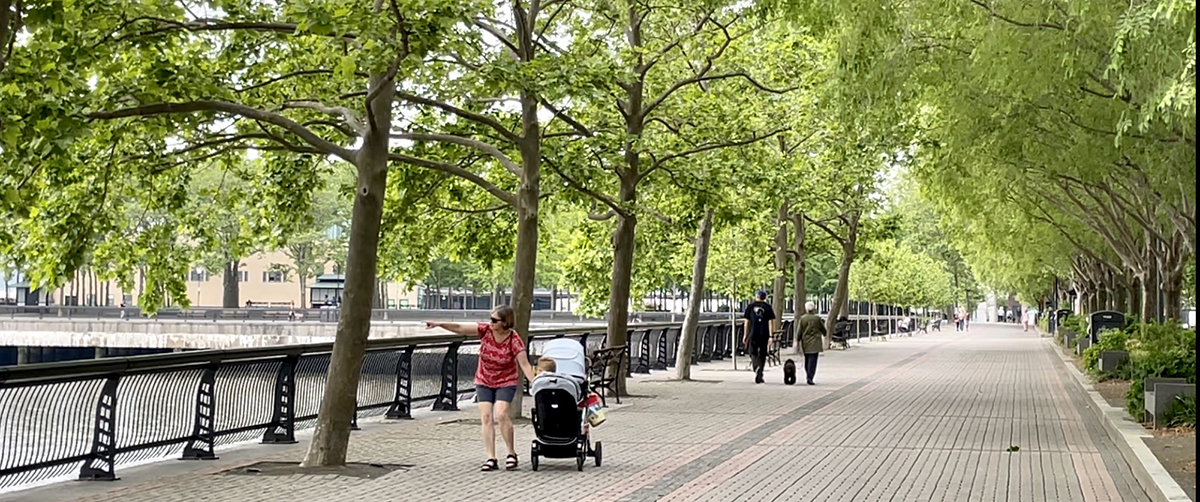2021 was a breakthrough year for Hoboken’s waterfront. Union Dry Dock and the Monarch Pier have been secured to become critical additions to the continuous, public waterfront park, first proposed by FBW 30 years ago. FBW ended the year with a highly successful, celebratory event honoring long-time chair Jim Vance. Throughout the year, FBW continued its advocacy for open space designed in a manner that is unquestionably public.
FBW | December 27, 2021
After contentious 4-year battle, Union Dry Dock will be a park, not a diesel ferry depot (June 2021)
FBW partnered with Mayor Ravi Bhalla and the City of Hoboken to defeat a proposal to move a ferry refueling/repair operation to one of the final, unfinished portions of Hoboken’s continuous, public waterfront park. NY Waterway’s acquisition of the Union Dry Dock property in November 2017 began a battle royale, pitting an outraged community against the ferry company, Governor Murphy and NJ Transit. In a settlement announced on June 17th, Governor Murphy supported Hoboken’s effort to secure the land for public open space. An agreement for the City to acquire the Union Dry Dock Property from NY Waterway will be finalized in the coming months.
Ownership of Monarch Pier transferred to the City of Hoboken ending a decade-long court battle (November 2021)
On November 4, 2021, the settlement between the City of Hoboken and Shipyard Associates was finalized, transferring ownership of the Monarch Pier to the City. The agreement ensured that this final parcel of the Shipyard development would be preserved in perpetuity as public open space. The development rights for the Monarch Towers were transferred to the Municipal Garage site on Observer Highway. FBW, represented by the New Jersey Appleseed Public Interest Law Center, spent ten years along with the City and neighborhood residents in this protracted legal battle.
FBW’s most watched video: In Hoboken, a model for a truly public waterfront (June 2021)
This video explains that Hoboken’s waterfront began with a plan — an extended public street grid — that clearly delineated the park along the Hudson River from the upland blocks of private development. Other Hudson River municipalities failed to extend the public right-of-ways — the streets and sidewalks — thus making the state-required 30-foot walkway difficult to access and diminishing the quality of the public space at the water’s edge.
On City of Water Day, FBW shines a spotlight on the unfinished central waterfront (July 2021)
FBW and the Hoboken community celebrated the recent announcement about Union Dry Dock with a march up the waterfront led by the Hungry March Band. In a waterfront tour led earlier in the day, we pointed out the need to extend the exemplary features of the South Waterfront to the north from 4th to 11th Streets: the protected bicycle pathway, the rows of shade trees and a pedestrian-friendly Sinatra Drive. Our march ended at Maxwell Place Park with Ben & Jerry’s ice cream and fajitas from East LA.
The November 11 Connect the Waterfront — The Final Stretch annual fundraising gala was a smash hit (November 2021)
FBW’s annual Connect the Waterfront fundraising party was sold out several weeks in advance. Board Chair Kate Valenta presented the Riparian Award to Jim Vance for his two decades of leadership advocating for a public waterfront and sustaining the mission of FBW. Jim was featured in a video where he explained what makes Hoboken’s waterfront great and his friends explain what makes Jim Vance unique. Frank Rosner and the FBW chorus sang a rewritten version of Gilbert & Sullivan’s Modern Major General [Vance].
Active streetscapes are the key to successful urban neighborhoods (October 2021)
In her influential book The Death and Life of Great American Cities published in 1961, Jane Jacobs relates the important lessons of her Greenwich Village neighborhood. The mix of residential and retail, closely-spaced and hugging the sidewalk and the street, results in a neighborhood full of life and vitality. For Jacobs, buildings oriented to the street are the key to successful, lively communities. She critiqued planning professionals for their failure to understand how urban neighborhoods work. Jacobs points out the mistake planners make in turning buildings inward, away from the street or isolating buildings in the midst of open areas, robbing these neighborhoods of the very things that engender a sense of community.
A model for the North End redevelopment: Hoboken’s own historic urban village (February 2021)
Hoboken developed primarily at the turn of the 20th century thus becoming an historic urban village. The goal of the North End Redevelopment Plan should be to replicate that special Hoboken scale and character, creating a new neighborhood that is lively and varied. Hoboken’s residential districts have successfully maintained much of that ambiance thanks to the zoning codes that limit building height, lot coverage, and rear yard setbacks. Potentially, the 30 acres at the North End could be an exemplary new development reflecting Hoboken’s traditional streetscape and architectural heritage.
Hoboken floods worsen as Ida, Henri put stormwater management strategies to the test (September 2021)
Since Superstorm Sandy hit the region nine years ago, Hoboken, aided with a $230 million federal grant, has made a concerted effort to implement a series of flood mitigation measures. New parks on the western side of town include stormwater detention systems. Rain gardens and bioswales have been constructed throughout town. Three wet weather pumping stations, costing tens of millions, have been built since 2010. Yet what has been completed to date was overwhelmed by Ida, which put parts of town under several feet of water, flooding basements and causing untold damage.
Hoboken’s South Waterfront is a model for trees in urban design (June 2021)
It was Hoboken’s good fortune in the 1990s to hire Henry Arnold of Arnold Associates in Princeton, New Jersey, to execute the landscape plan for Hoboken’s South Waterfront. Mr. Arnold authored the book Trees in Urban Design. He devoted his career to understanding how trees can play an essential role in a city’s character and how trees should be viewed as a fundamental part of a city’s infrastructure. His landscape design for the South Waterfront has won multiple awards.
Landscape architect explains advanced tree planting techniques employed at South Waterfront (April 2021)
In this 30 minute interview, Stephen Lederach of Arnold Associates expounds on the planting medium used throughout Hoboken’s South Waterfront that has allowed the rows and grove of shade trees to thrive since they were planted twenty-two years ago. Also, learn about trees as infrastructure, the heat-island effect and much more.
FBW files complaint re: public access requirement for Waterfront Walkway (April 2021)
Since Pier A Park opened in 1999, the Hudson River Waterfront Walkway that spans the perimeter of the pier has been open and accessible to the public 24 hours a day as required by the State of New Jersey. Located at the far end of Pier A Park, with stunning views of the Hudson River and Manhattan skyline, is an iconic pavilion. People enjoy this spot as a safe retreat from the noise and hubbub of city life. The fishermen who frequent the northeast corner of the pier escape from the sun underneath the pavilion along with parents and children who traverse this portion of the waterfront walkway. The City allowed the closure of this pavilion for a private use that extended over a period of several months, ignoring objections from the Fund for a Better Waterfront.
Ranked Choice Voting explained: how it works & its many benefits (December 2021)
Renee Steinhaen, the Executive Director of NJ Appleseed Public Interest Law Center, leads the executive team of Voter Choice NJ, a nonprofit, nonpartisan organization working to enact Ranked Choice Voting (RCV) for New Jersey. In this video, Ms. Steinhagen explains how RCV works and how it enhances participation and choice in our elections. On Wed. Dec. 15, the Hoboken City Council unanimously approved what is known as a “trigger ordinance.” The ordinance will only go into effect once the state passes enabling legislation and it is then ratified by Hoboken voters. Over the years, election reform and Initiative & Referendum have been vital to furthering FBW’s efforts.
Related links
After a contentious, multi-year battle, City will acquire Union Dry Dock
Monarch settlement advances
In Hoboken, a model for a truly public waterfront
Photos from Connect the Waterfront – The Final Stretch, FBW’s 2021 gala at the Antique Loft
Jim Vance explains what makes Hoboken’s waterfront great; his friends explain Jim Vance
On City of Water Day FBW shines a spotlight on the unfinished central waterfront
Active streetscapes are the key to successful urban neighborhoods
Hoboken floods worsen as Ida, Henri put stormwater management strategies to the test
A model for the North End redevelopment: Hoboken’s own historic urban village
The privatization of part of Pier A Park’s Hudson River Waterfront Walkway
Pulling the “trigger ordinance” for Ranked Choice Voting

